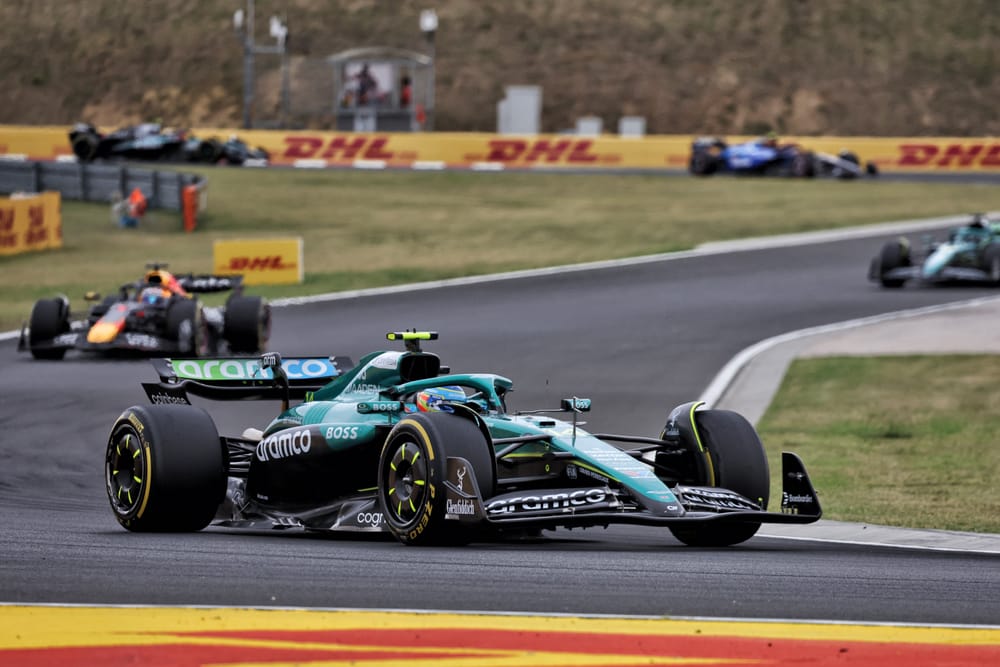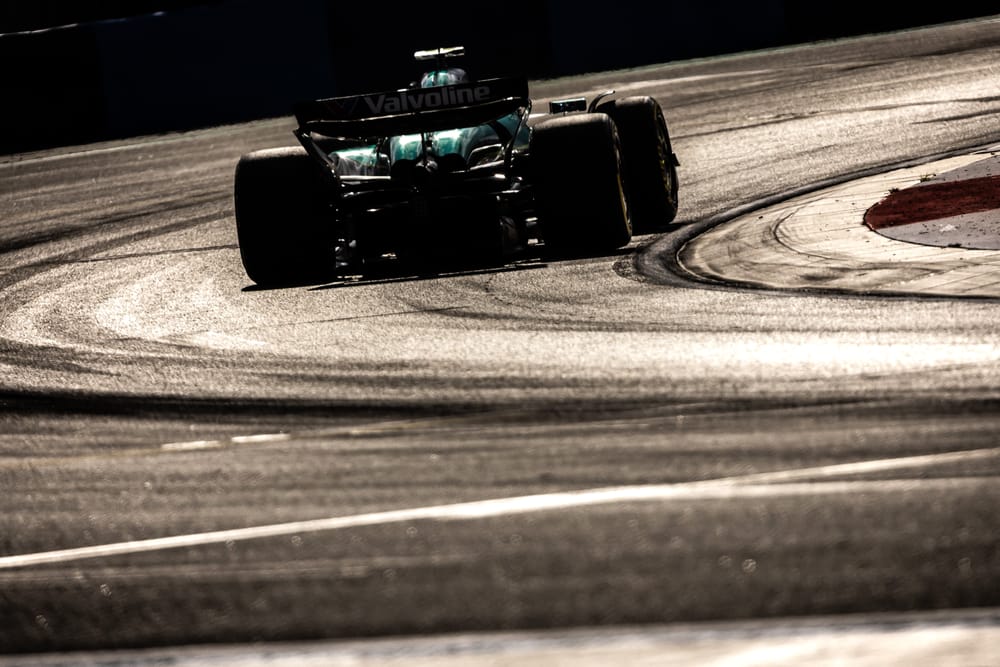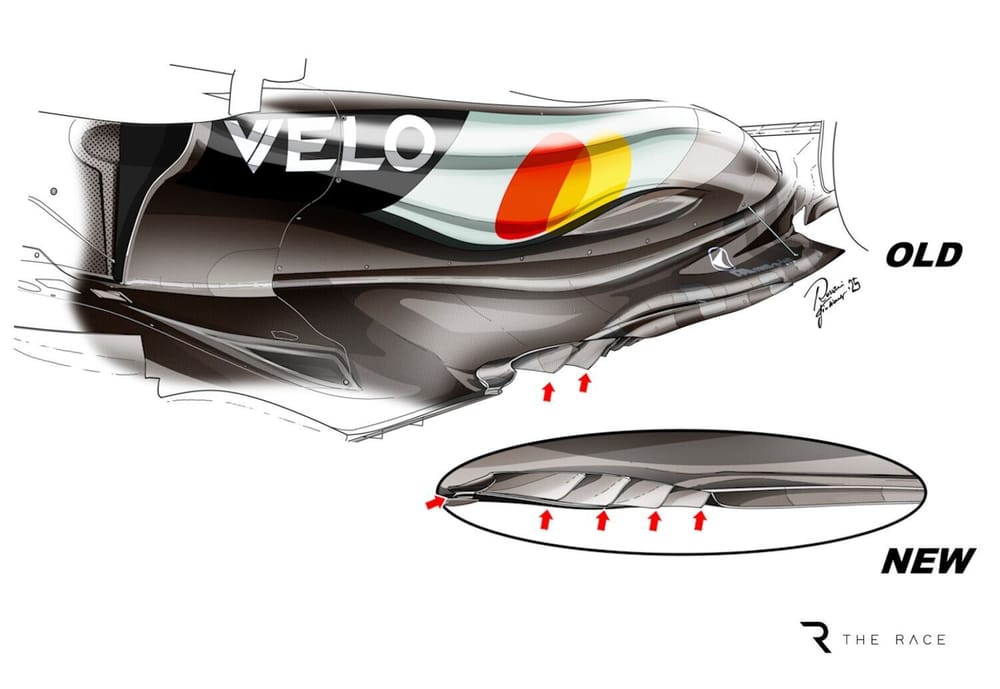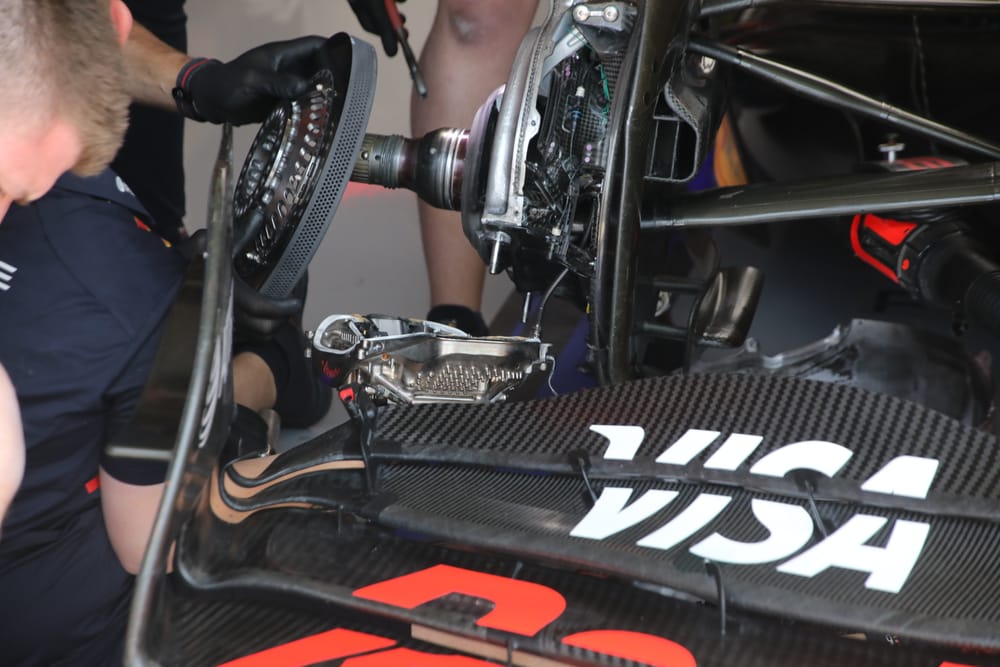Everyone was surprised by the transformation in the competitiveness of the Aston Martin between Spa and the Hungaroring just before Formula 1's summer break.
In Belgium, it was the slowest car, but just a few days later Fernando Alonso finished fifth on actual pace. But given the changes made, there are some underlying hints as to why things might have changed so dramatically and what Aston Martin can take from it.
Whenever something changes in the behaviour or performance of your car, what matters is that you understand it. It’s no good suddenly being able to produce good results if you don’t know why it’s happened, because then you can’t repeat it or, worse still, you won’t improve on it. And Alonso himself was as taken aback as anyone else in the team, never mind the outside world.
“It’s a surprise,” said Alonso. “It’s a nice surprise. The good thing is that we were competitive and we were fast. The concerning thing is that we don’t know why.
“We need this week at the factory [before the summer shutdown] to analyse exactly what are the differences between Spa and Hungary, what are the differences on the car, on the set-up, on the aero devices that we were racing with.
“Obviously, the main thing for us was the front wing that was new this weekend. If that front wing gave us that much performance, that's very good news. But I think that has to be understood at the moment.”
So why the sudden change? Yes, Spa and the Hungaroring are very different circuits but, in reality, up front, the same cars had more or less the same level of performance and no other team had such a big swing in competitiveness.
The car’s aerodynamic efficiency will come into play, and that’s a weakness of the Aston Martin, but even so, to make this step requires a fundamental difference in how the car is working aerodynamically.
So let’s look at the changes to the mounting of the front wing to the nose, which now incorporates a slot gap across its full width. What benefits might that bring aerodynamically?
The area we are talking about here is shown below, between the yellow line, which represents the separation point on the most forward element, and the red line, which represents the separation point on the second element. The purple line represents the centre line of the leading edge radius of the nose itself.
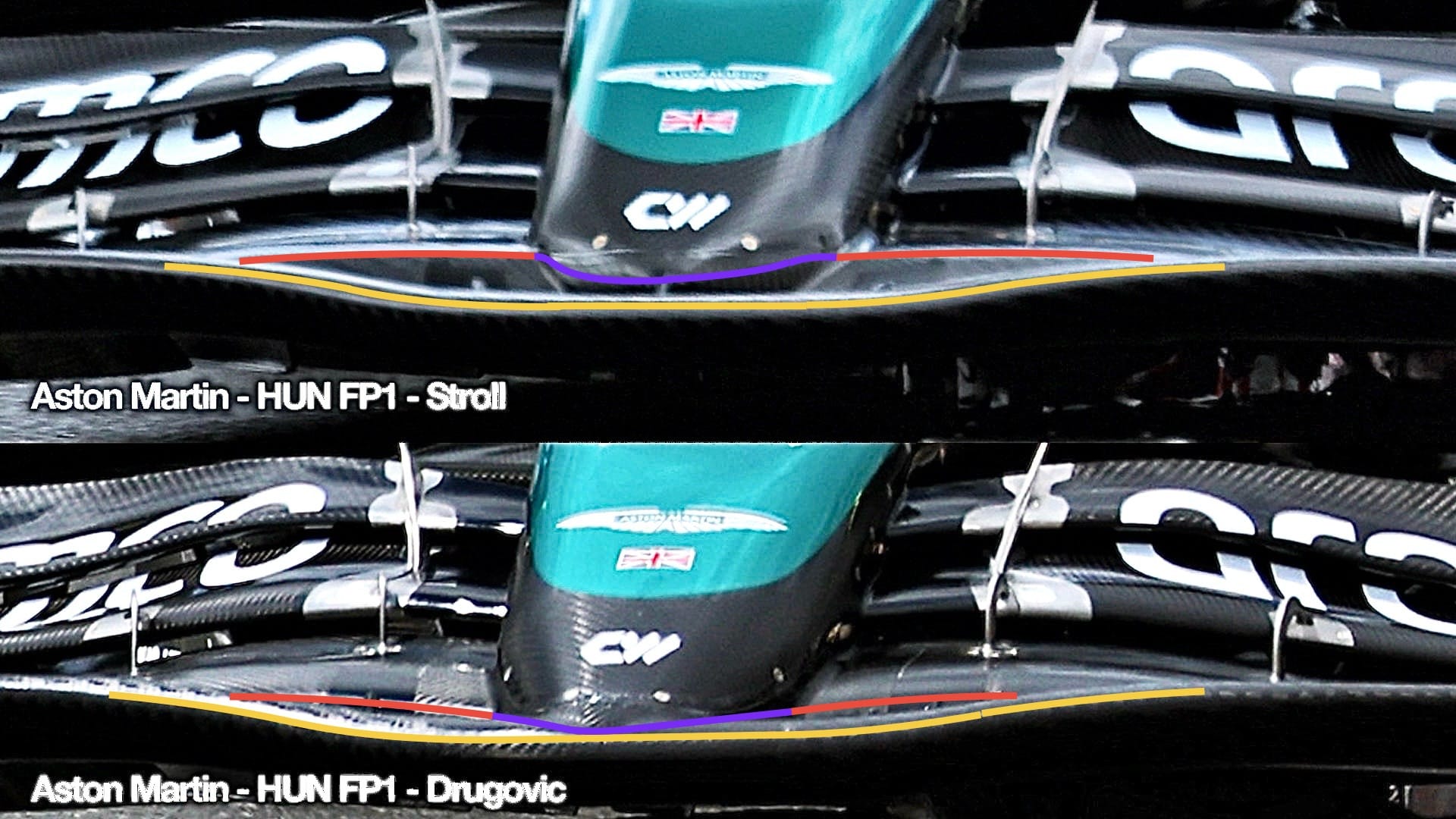
As you can see on the older version, the separation point on the forward element and leading edge radius on the nose are in the same place. This means that any flow needs to go around the sides of the nose.
The separation point which is sometimes called the stagnation point is where the airflow separates and either goes over the top of the wing element or underneath it.
This relatively small change can bring large gains. The central section of the underfloor between the two most inner leading edge floor splitters is the main flow that feeds the diffuser.
The two pictures below of the previous version are to show how the airflow, highlighted with the orange arrows, tries to fill in the void underneath the nose section blockage. This airflow needs to retain as much energy and hence velocity as possible as it is the airflow that feeds the rear diffuser.
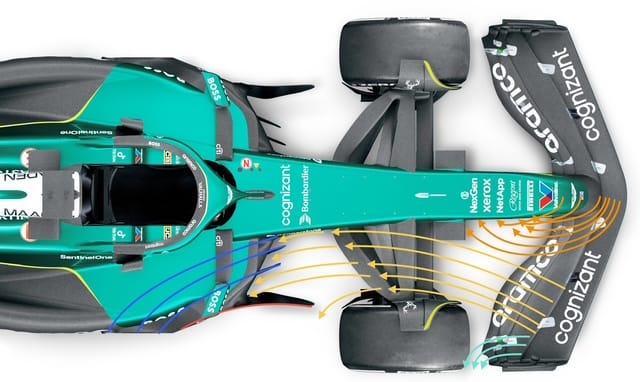
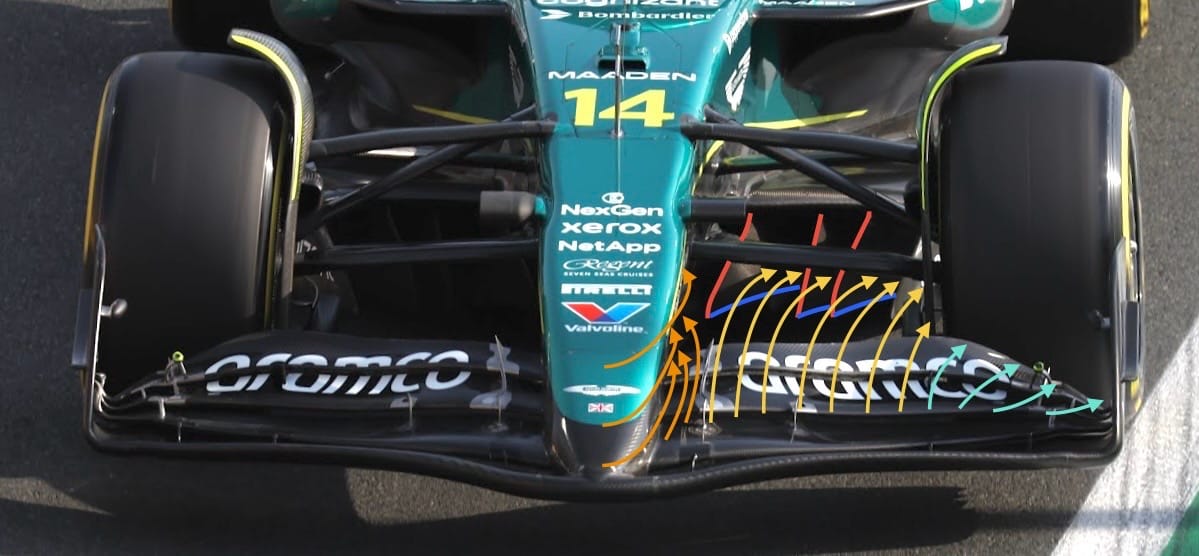
The airflow that passes over and under the outer section of the wing flap assembly is highlighted above with the yellow arrows. This airflow passes through the three vertical splitters which are highlighted with the red lines showing the leading edge and the blue lines showing the lower edge.
The outer cyan (light blue) arrows are to indicate the air flow that is used for outwash.
This problem all gets worse when you are running higher downforce levels. To achieve those higher downforce levels and some level of balance you need to use more front wing angle. That angle will be nearer the centre section of the front flap assembly, so will induce increased transverse airflow outwards. This will reduce the airflow that is trying to tuck underneath the nose.
I have highlighted this theoretically higher wing angle by changing the thickness of the airflow lines below. Heavier lines indicate increased airflow, lighter lines decreased airflow.
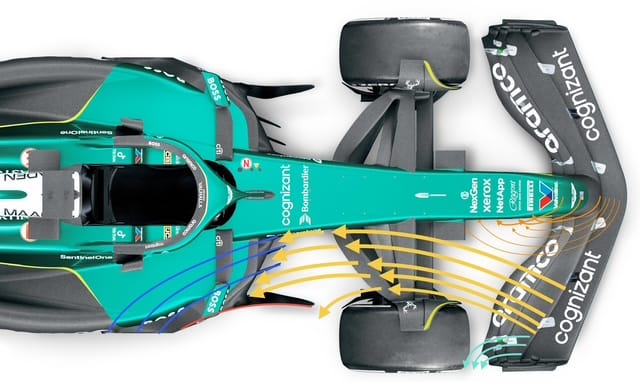
If the wing is powerful enough, it will allow you to balance the car. However, it will reduce the downforce created by the underfloor so, in reality, you could end up with a balanced car but with less overall downforce by running these higher front wing angles.
From this illustration below, you can see why Mercedes got led up the garden path in 2023 with its trick inner section to the front wing assembly allowing increased flow under the nose blockage.
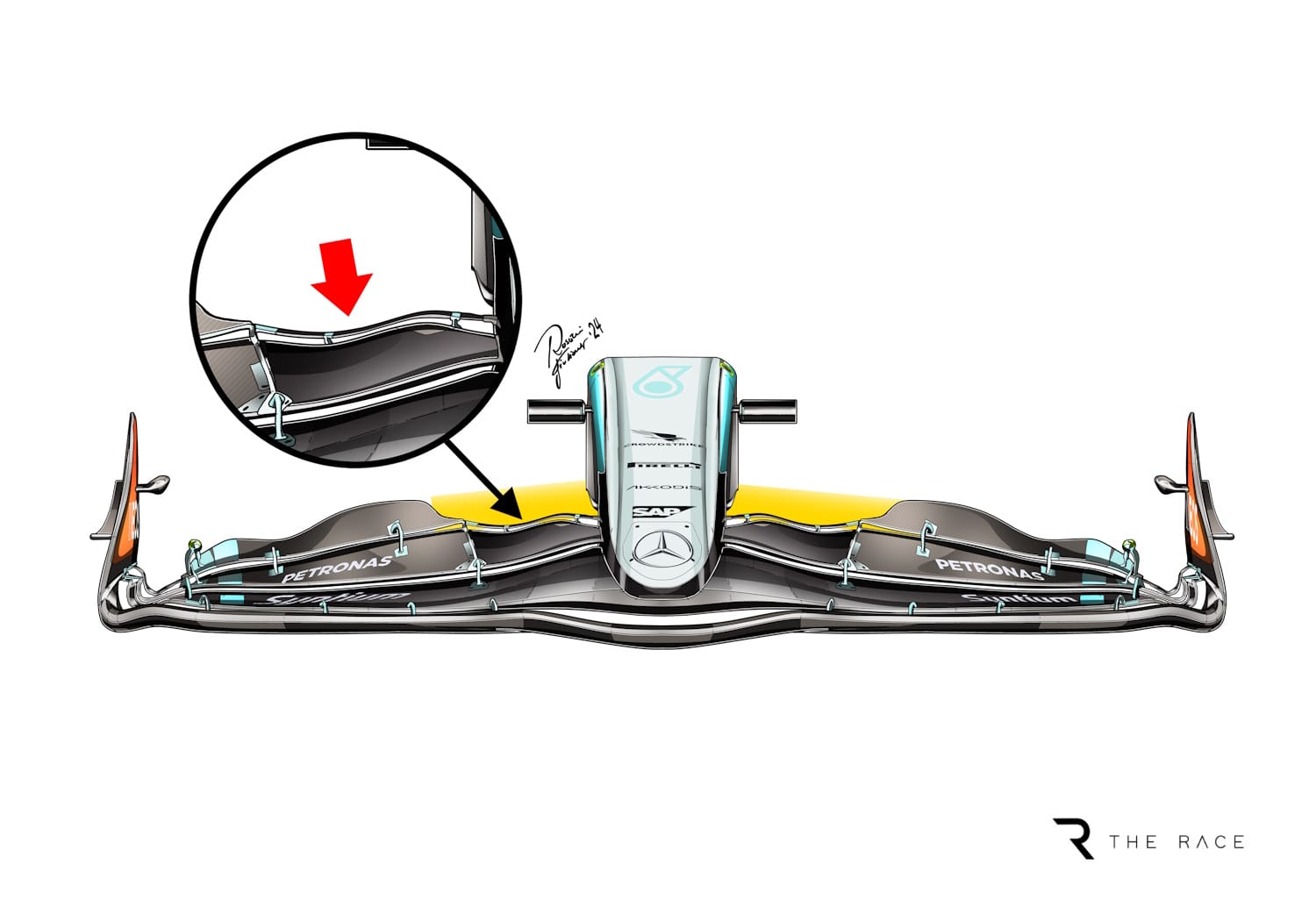
The majority of this airflow which is highlighted with the yellow arrows in the Aston Martin image above is extracted out of the side of the front corner of the floor.
It is helped by the small front corner diffuser and splitters highlighted with the red ellipse below. Some of it however will spill over that lower blue edge, forming a horizontal vortex curtain that helps re-energise the airflow coming through underneath the nose section as it is pulled through by the diffuser expansion.

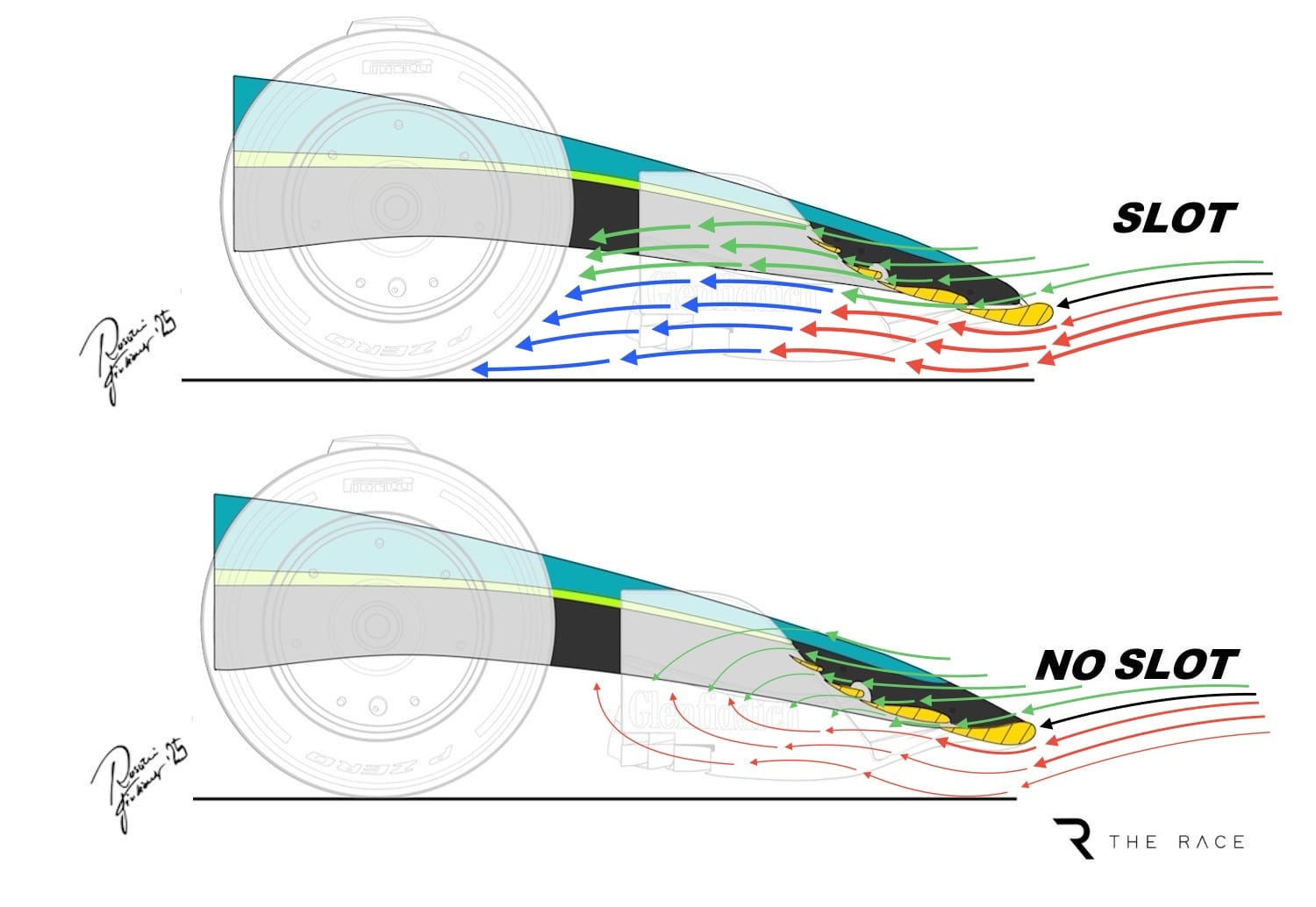
The second illustration (directly above) shows the airflow that goes underneath the forward wing element and the airflow that is going around the nose which is then trying to tuck underneath the nose blockage.
This separation point is highlighted with the black arrow. This airflow will then try to fill that void underneath the nose as best possible, but in doing so it is getting beaten up, losing its energy and, in turn, velocity.
I mention velocity here because it’s the speed of that flow at the leading edge of the underfloor that the expansion of the diffuser will work on.
It basically increases that velocity as it travels under the lowest underfloor surface, and when that flow gets to the back of the car it will once again get to more or less free stream velocity. If it is still slower, it will generate lots of drag and not as much downforce as it potentially could.
In the first illustration, this slot gap allows some airflow to travel through that area to help fill that void underneath the nose. This means the overall flow will retain more of its energy and, in turn, velocity when it arrives at the leading edge of the floor. This means more downforce and overall an improved overall aerodynamic efficiency.
I have again highlighted the separation point with the black arrow and tried to highlight this improved airflow energy with thicker airflow lines on this first illustration.
Even more importantly, it will all work more consistently when the central section of the front wing, which is the lowest point, gets closer to the track surface which it will do at high speed and under braking.
We don’t have an Aston Martin underfloor picture, so I have used an early Mercedes version (below) to illustrate the differences in the flow to the underfloor leading edge and the flow that is pulled through with the diffuser expansion.
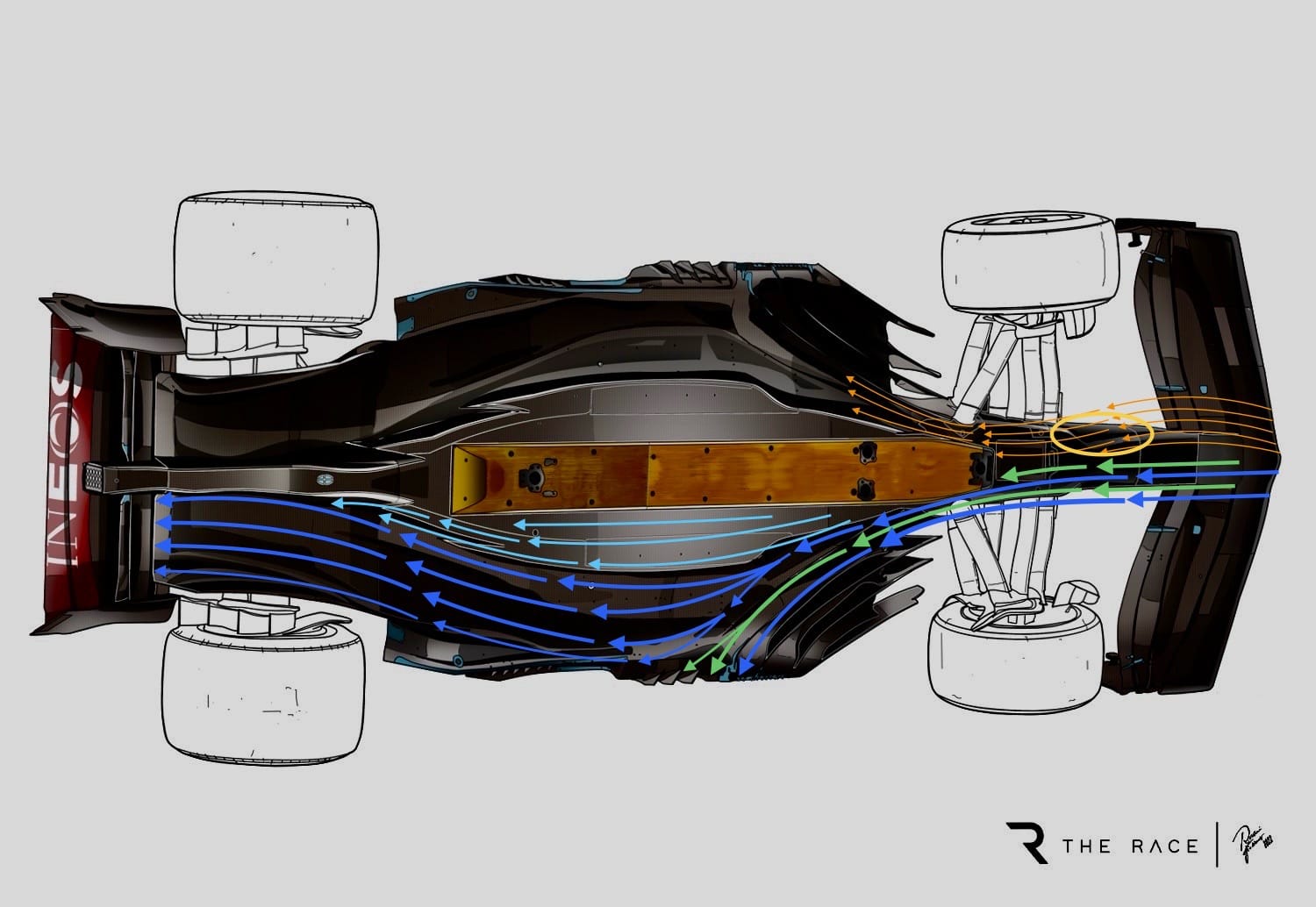
You can see the relief on the nose underside highlighted with the yellow ellipse to entice the airflow to tuck underneath the void created by the nose. The green arrows represent the flow coming through the slot gap. The blue flow is what comes underneath the wing’s forward-most element.
The orange on the opposite side with no slot gap all comes through under the forward-most element. This airflow will be affected by the changing gap between the forward wing element and the track surface. The thinner lines represent lower energy airflow.
The complexity of the airflow in the underfloor shows that the big problem with a change like this late in the season when everyone will be flat out on the 2026 car is that you will need to go through the rest of the car to optimise it.
I don’t think Aston Martin has gone to the full extent that it could have with this slot gap area arrangement. It is more likely about what could be done quickly and easily, as opposed to a package that was optimised in the windtunnel and CFD. Effectively, it’s something that I would call a cut and shut.
I’m not expecting Aston Martin’s Hungary level of performance to be its new normal. However, it might just be the first proper step forward relative to the opposition that we have seen from Aston Martin over the last two seasons.
As a team it lost its way with the ground-effect regulations but even though it hasn’t yet been optimised, the introduction of this slot gap (which I am a fan of) into the nose to front wing interface is a good step that indicates where the improvements need to be made.
And that’s good news not only for the rest of the year, but also 2026 because while the regulations are dramatically different this gives it a better depth of knowledge to draw on.


